
Battlezone is a first-person shooter tank combat game released for arcades in November 1980 by Atari, Inc. The player controls a tank which is attacked by other tanks and missiles, using a small radar scanner to locate enemies around them in the barren landscape. Its innovative use of 3D graphics made it a huge hit, with approximately 15,000 units sold.
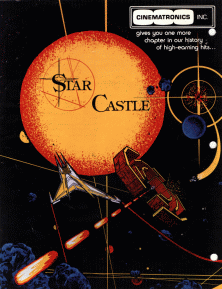
Star Castle is a vector graphics multidirectional shooter released in arcades by Cinematronics in 1980. The game involves obliterating a series of defenses orbiting a stationary turret in the center of the screen. The display is black and white with the colors of the rings and screen provided by a transparent plastic screen overlay.
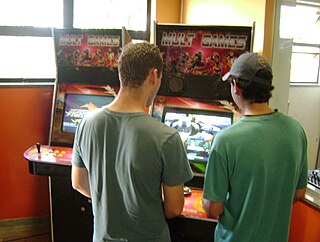
An arcade cabinet, also known as an arcade machine or a coin-op cabinet or coin-op machine, is the housing within which an arcade game's electronic hardware resides. Most cabinets designed since the mid-1980s conform to the Japanese Amusement Machine Manufacturers Association (JAMMA) wiring standard. Some include additional connectors for features not included in the standard.
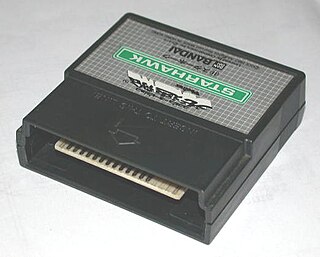
Starhawk is a 1979 vector arcade game designed and programmed by Tim Skelly and manufactured by Cinematronics. Starhawk is a shoot 'em up unofficially based on the Star Wars: Episode IV trench run, one of the first arcade games to blatantly use concepts from Star Wars. The game was unique at the time for its pseudo-3D graphics. It was distributed in Japan by Sega, and was later ported for the Vectrex home system in 1982.

Cinematronics Incorporated was an arcade game developer that primarily released vector graphics games in the late 1970s and early 1980s. While other companies released games based on raster displays, early in their history, Cinematronics and Atari, Inc. released vector-display games, which offered a distinctive look and a greater graphic capability, at the cost of being only black and white (initially). Cinematronics also published Dragon's Lair in 1983, the first major LaserDisc video game.
1979 saw many sequels and prequels in video games, such as Space Invaders Part II and Super Speed Race, along with new titles such as Asteroids, Football, Galaxian, Head On, Heiankyo Alien, Monaco GP, Sheriff and Warrior. For the second year in a row, the highest-grossing video game was Taito's arcade game Space Invaders and the best-selling home system was the Atari Video Computer System.
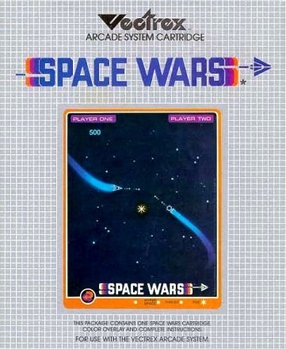
Space Wars is a shooter video game released in arcades by Cinematronics in 1977. Like the PDP-1 program Spacewar! (1962) it is based on, it uses black and white vector graphics for the visuals. The hardware developed for Space Wars became the platform for most of the vector-based arcade games from Cinematronics. It was distributed in Japan by Taito in 1978, and a Vectrex port was published in 1982.

G-LOC: Air Battle is a 1990 combat flight simulator arcade game developed and published by Sega. It is a spin-off of the company's After Burner series. The title refers to "G-force induced Loss Of Consciousness". The game is known for its use of the R360 motion simulator arcade cabinet. The arcade game was a commercial and critical success upon release.

Star Fire is a first-person arcade coin-operated space combat video game created by Technical Magic for Midway-Bally and licensed for manufacture to Exidy in December 1978. It was distributed in Japan by Taito and Esco Trading in 1979. Designed by Caltech engineers Ted Michon, and David Rolfe and inspired by the movie Star Wars, the game is not based on a licensed property.
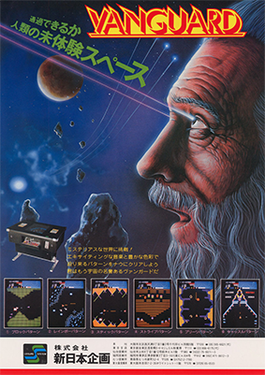
Vanguard is a scrolling shooter arcade video game developed by TOSE. It was released by SNK in Japan and Europe in 1981, and licensed to Centuri for manufacture in North America in October and to Zaccaria in Italy the same year. Cinematronics converted the game to cocktail arcade cabinets in North America. The player flies a ship through forced-scrolling tunnels with sections that move horizontally, vertically, or diagonally, to reach a boss at the end. The ship is controlled with an 8-way joystick, and it can fire in four directions via four buttons in a diamond arrangement.

Reactor is an arcade game released in 1982 by Gottlieb. The object of the game is to cool down the core of a nuclear reactor without being pushed into its walls by swarms of subatomic particles. Reactor was developed by Tim Skelly, who previously designed and programmed a series of vector graphics arcade games for Cinematronics, including Rip Off. It was the first arcade game to credit the developer on the title screen. Reactor was ported to the Atari 2600 by Charlie Heath and published by Parker Brothers the same year as the original.
Blaster is the first-person rail shooter video game, released for arcades by Williams Electronics in 1983. It was developed by Eugene Jarvis and Larry DeMar. A vague sequel to Robotron: 2084, the game is a shoot 'em up set in outer space. The goal is to destroy enemies, avoid obstacles, and rescue astronauts in twenty levels to reach paradise.
Tim Skelly was a video game designer and game programmer who developed arcade games for Cinematronics from 1978 until 1981. He designed a series of pure action games using black and white vector graphics. One of his early games, Rip Off, was the first arcade game with two-player cooperative play. Star Hawk, Rip Off, Armor Attack, and Star Castle were all later ported to the Vectrex home system.
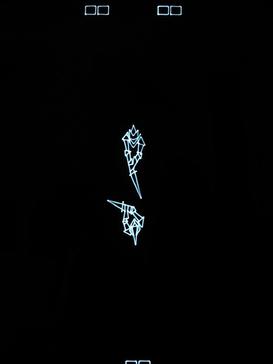
Warrior is a 1979 arcade fighting game. It is considered one of the first fighting games, excepting several boxing games such as Heavyweight Champ, released in 1976, and Atari's unreleased Boxer.
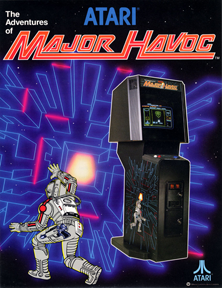
Major Havoc is an arcade action game released by Atari, Inc. in 1983. A vector-based upright arcade cabinet, Major Havoc consists of several smaller game experiences played in succession, including a fixed shooter, platform game, and a lunar lander sequence. It was developed by Owen Rubin with some levels designed and tuned by Mark Cerny, who joined the development team approximately a year into the game's development.
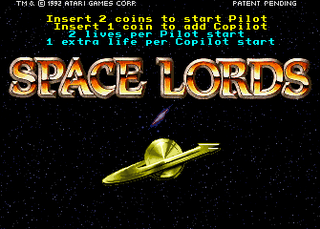
Space Lords is a video game released in arcades by Atari Games in 1992. It is a first-person perspective space combat video game.
Vectorbeam was an arcade game manufacturer active in the late 1970s who specialized in vector graphics-based arcade games. It was formed after splitting off from its primary competitor, Cinematronics, and disappeared after re-merging with them soon after.

Rip Off is a multidirectional shooter with black and white vector graphics written by Tim Skelly and released in arcades by Cinematronics in 1980. It was the first shooter with cooperative gameplay and an early game to exhibit flocking behavior. Rip Off was ported to the Vectrex home system in 1982.

Sundance is a puzzle arcade video game using vector graphics released by Cinematronics in 1979. The game consists of two grids floating in a pseudo-3D space with small suns bouncing between them.

Jack the Giantkiller is a 1982 arcade game developed and published by Cinematronics. It is based on the 19th-century English fairy tale "Jack and the Beanstalk". In Japan, the game was released as Treasure Hunt. There were no home console ports.
















